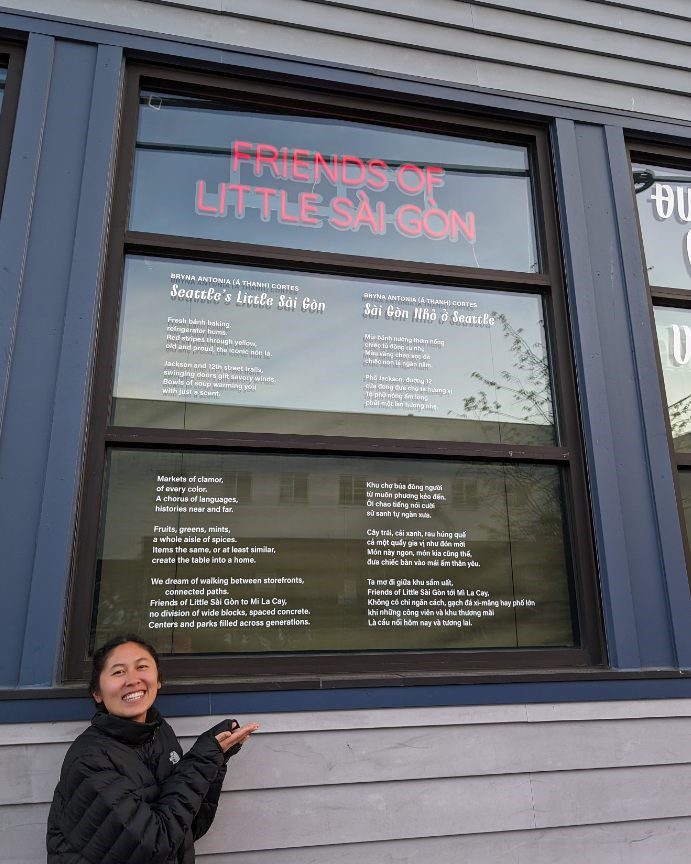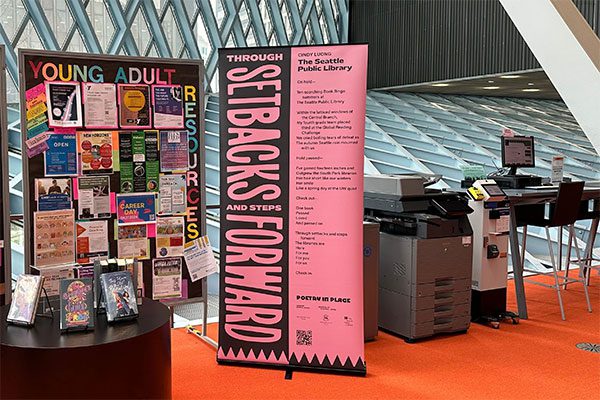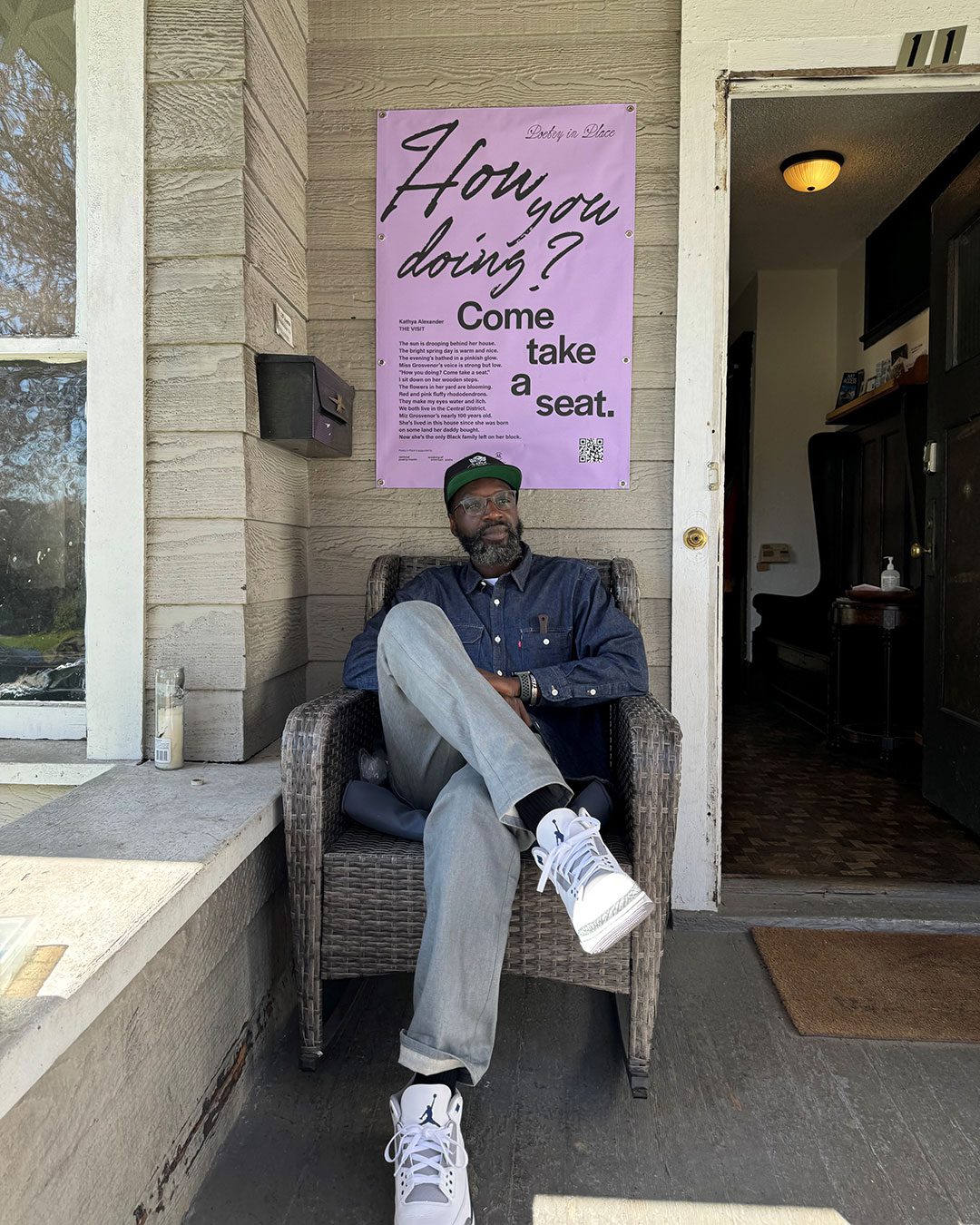
August 3 – December 31, 2017
This fall, eight artists invite you to discover Seattle’s cultural “Heart of the City” where all people can feel a sense of belonging, and participate in community and something bigger than themselves. Seattle Center Sculpture Walk is brought to you through the support of Seattle Center, and the Office of Arts & Culture, with the sponsorship of Alaska Airlines. Photos by Minh Carrico.
***Special Offer: Snap your pic or video of the temporary art installations at Seattle Center, upload to Facebook, Instagram or Twitter, and tag it with #iARTAlaska. Make sure your post is Public. On the first of each month (September thru December), we’ll select one winning post to receive round trip air travel for two on Alaska Airlines. More info: seattlecenter.com/art
Seattle Center Sculpture Walking Tour
Thursday, September 21, 6-7 p.m.
The tour will start at the Monorail platform, located northwest of the Space Needle, and will end in the Armory where guests, 21 and up, may participate in Seattle’s  Best Damn Happy Hour featuring a no-host bar and specials in the Armory restaurants.
Best Damn Happy Hour featuring a no-host bar and specials in the Armory restaurants.
Sitting Pretty
Hugo Moro
Hugo Moro’s Sitting Pretty weaves recycled vinyl banners into benches on the Seattle Center campus to enliven the visitor’s experience. Through this work, Moro explores ideas of conservation and up-cycling in the visual arts.
For chimeforest, April Soetarman created a series of suspended metal pieces tuned to a five or seven musical tone Javanese gamelan scale. This temporary installation incorporates sonic diversity and serves as a complement to the permanent sound installations featuring Western harmonies at Seattle Center, including the Artists at Play playground by Northwest artists Judith Caldwell and Trimpin, and Dan Corson’s Sonic Bloom.
Henry Jackson-Spieker’s Lattice uses specific materials to represent Seattle’s industrial past, creative industries present, and changing future. Through this focus on the past, present, and future of Seattle, the artist illustrates how the center or focus of the city has changed. Jackson-Spieker chose steel, wood, and aircraft cables to represent Seattle’s industrial past and anchor the work, both literally and figuratively, in a woven web. Seattle’s present is represented by blown glass and cast bronze, symbolizing the tangible elements of Seattle, such as technology and industry, and its intangible elements of music, art, and culture. To represent Seattle’s future, Jackson-Spieker uses both the lighting of the covered walkway and the shape of the entire sculpture to mark the center of the city: anyone walking or standing under the sculpture becomes Lattice’s focal point.
Randi Ganulin’s Lodestar is inspired by the Hindu myth of the god Indra’s casting of a net over the Earth. Ganulin’s artwork represents Indra’s infinite net, adorned with mirrored jewels at each juncture, so that each reflective gem infinitely reflects every other.
Resilience
Erin Genia
Using a rainbow palette to signify the celebration of diversity at Seattle Center, the “Heart of the City,” Erin Genia created a hand-pieced Morningstar banner. The Morningstar is a Native American symbol for patience and purity,  attributes revered in the face of conflicting views on diversity.
attributes revered in the face of conflicting views on diversity.
To see the Morningstar, follow Venus: it can be seen as the brightest light in the east before dawn and in the west before the sun has set. Resilience carries the message that diversity is beautiful and pays homage to urban Native people’s resilience through vibrant cultural expression.
Wake Up Call
Kalina Chung
 In Chinese culture, 2017 is the Year of the Rooster. With 2017 came a new American presidential administration, which has led to national clashes of cultural differences and beliefs. Kalina Chung’s Wake Up Call incorporates American roosters as weathervanes atop poles around Key Arena entrances. The weathervanes are repurposed and display red and gold, the traditional celebratory colors of Chinese New Year, while the rooster symbolizes civil responsibility, protection, and courage.
In Chinese culture, 2017 is the Year of the Rooster. With 2017 came a new American presidential administration, which has led to national clashes of cultural differences and beliefs. Kalina Chung’s Wake Up Call incorporates American roosters as weathervanes atop poles around Key Arena entrances. The weathervanes are repurposed and display red and gold, the traditional celebratory colors of Chinese New Year, while the rooster symbolizes civil responsibility, protection, and courage.
Camouflage Net Project
Tara Tamaribuchi
On the 75th anniversary of Executive Order 9066, which sent more than 100,000 people of Japanese descent to prison camps during World War II, Tara Tamaribuchi’s Camouflage Net Project highlights the camouflage net factories at the Santa Anita Assembly Center, Manzanar and Gila River internment camps,  where Japanese Americans made tens of thousands of these nets for the U.S. Army.
where Japanese Americans made tens of thousands of these nets for the U.S. Army.
Tamaribuchi stated that “the intention of this installation is to connect my handiwork to that of my incarcerated community, send pride of heritage back to them through use of traditional kimono fabric, and create a discrimination filter with camouflage. Camouflage protects people and objects by blending them into their surroundings. In 2017, we are witness to federal policies that discriminate against race, religion, sexual orientation, and other identifiers. This camouflage is a metaphor for protection from discrimination. It acts as a filter through which we see the true nature of people, as interconnected with each other and the world.”
Rest to the Nest
Sofia Babaeva
 The title of Sofia Babaeva’s work, Rest to the Nest, elevates geography as an important aspect of identity. Babaeva was inspired by barn swallow nests here in the Pacific Northwest that are often seen tucked under bridges, covered walkways, and awnings. Year after year, the swallows return to the same nests to rest, and the colonies swell in size with each hatchling. In this installation, the artist draws parallels between human settlements and social structures and colonies of barn swallows. Through Rest to the Nest we can explore how proximity and privacy coexist in groups of built structures, and how they can create respite and safety from social stressors, tighten social bonds, and build communities.
The title of Sofia Babaeva’s work, Rest to the Nest, elevates geography as an important aspect of identity. Babaeva was inspired by barn swallow nests here in the Pacific Northwest that are often seen tucked under bridges, covered walkways, and awnings. Year after year, the swallows return to the same nests to rest, and the colonies swell in size with each hatchling. In this installation, the artist draws parallels between human settlements and social structures and colonies of barn swallows. Through Rest to the Nest we can explore how proximity and privacy coexist in groups of built structures, and how they can create respite and safety from social stressors, tighten social bonds, and build communities.





